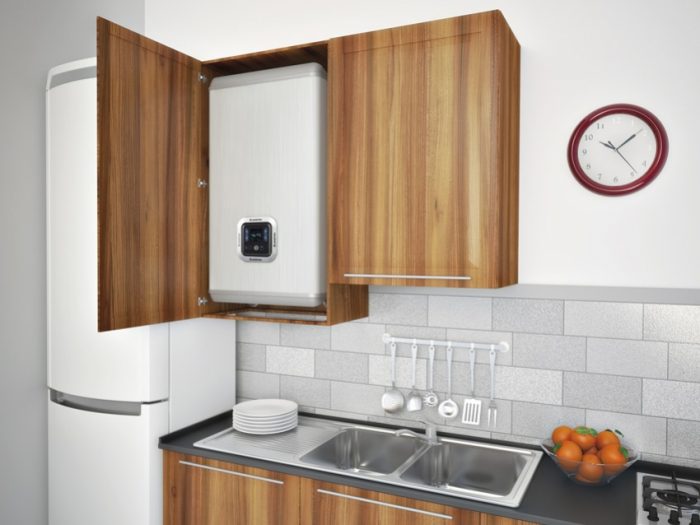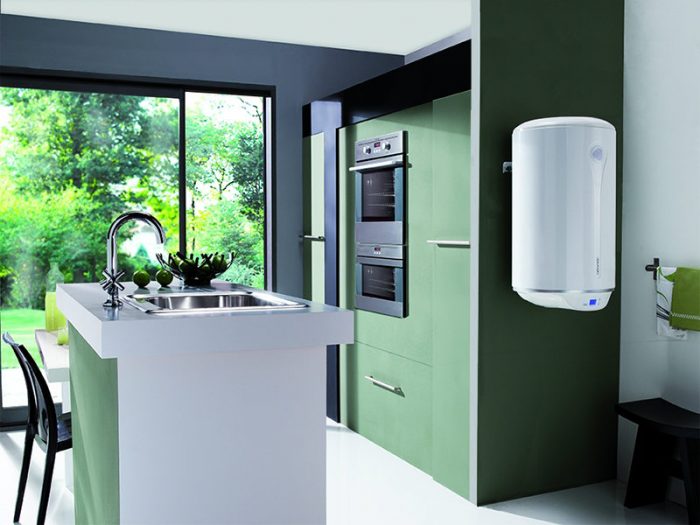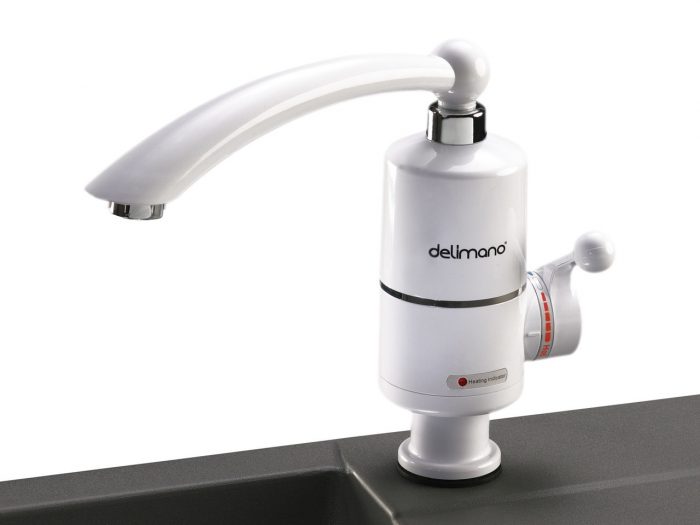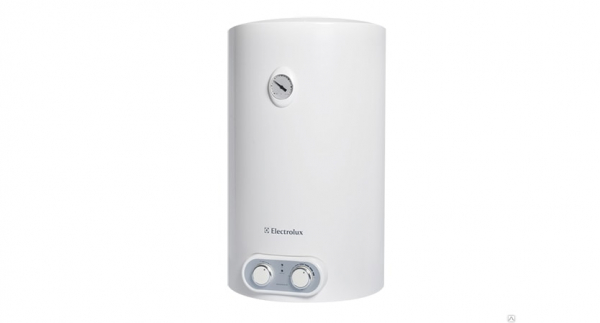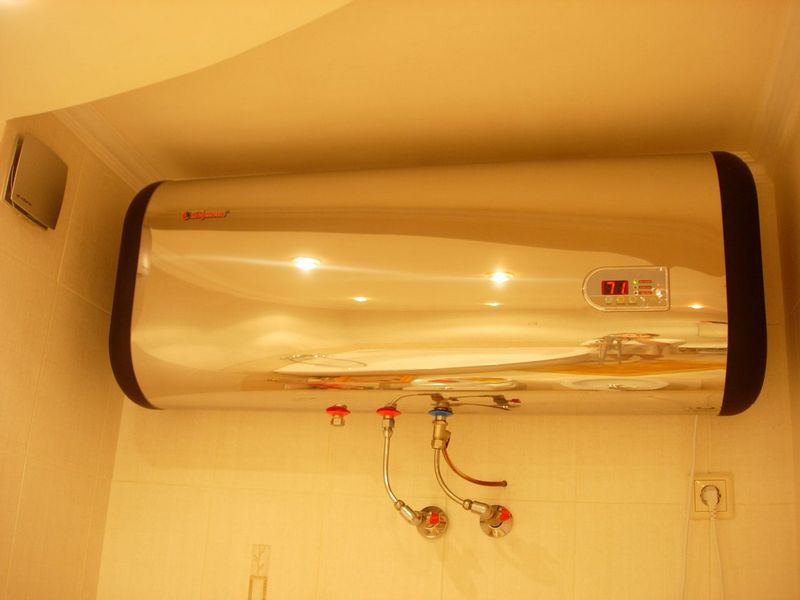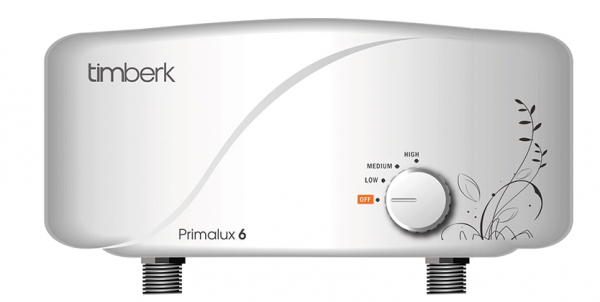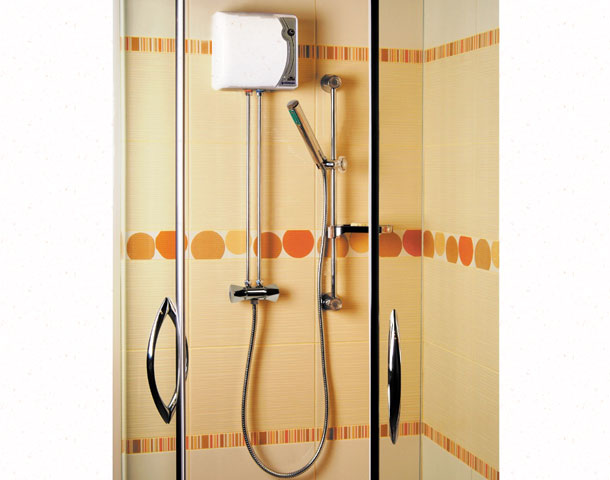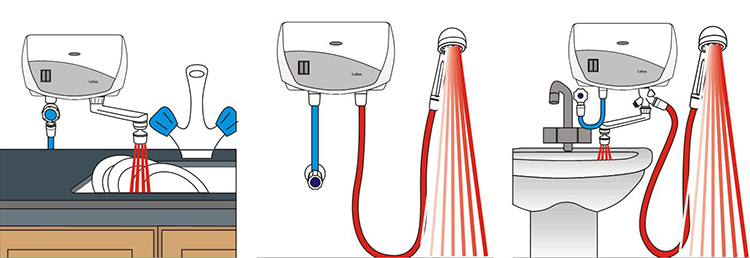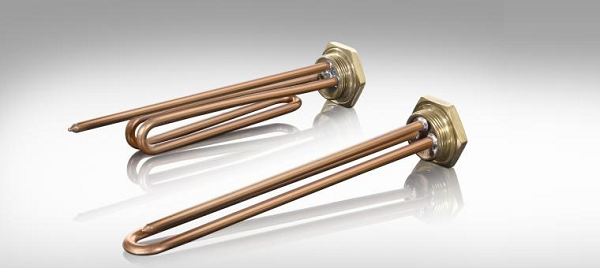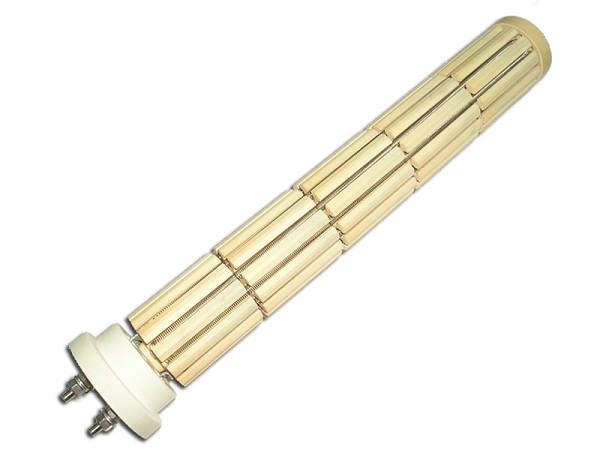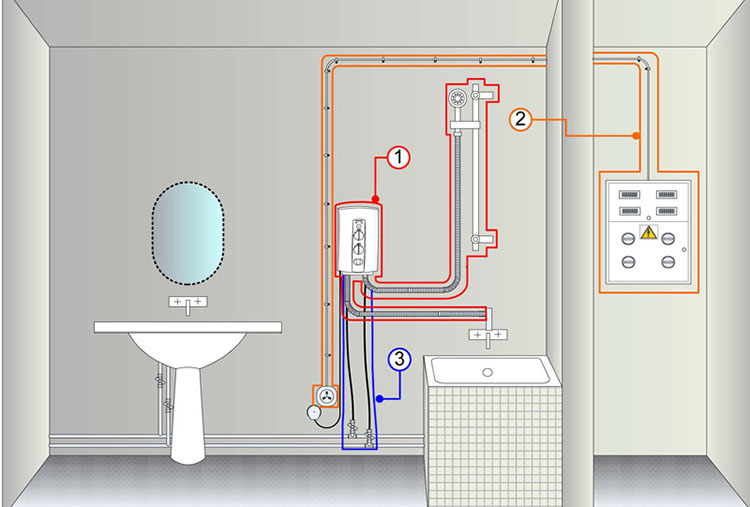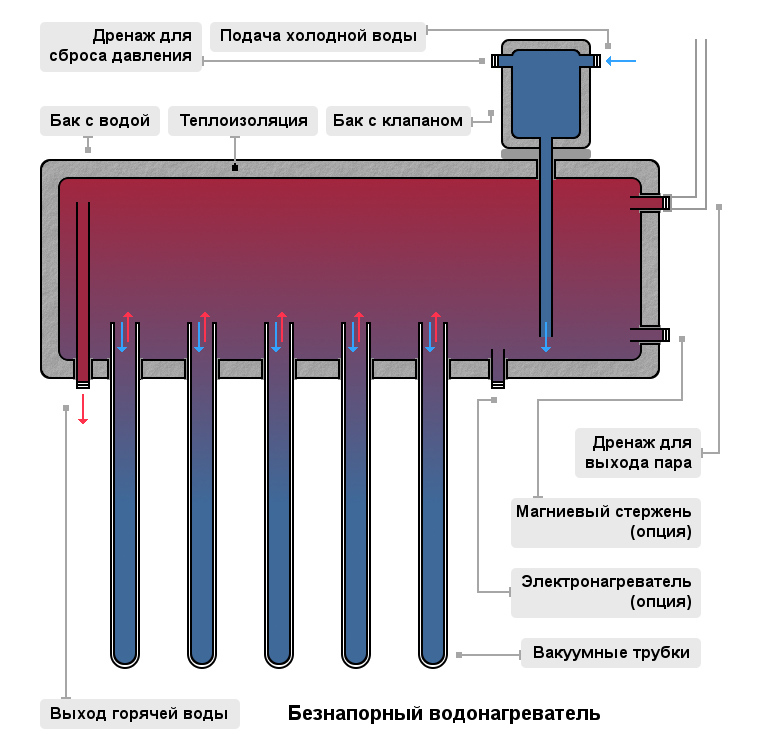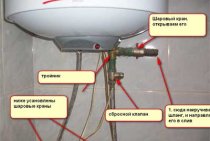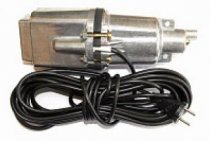Device types
When choosing a dishwashing water heater, it is worth considering how actively you will use it, and how much water you will need to use daily.
Many people approach this issue too recklessly, and decide to buy equipment without answering key questions to themselves. As a result, the operation of the device may not be satisfactory, the amount of water is insufficient, and other negative points also emerge. You probably don't want to experience something like this. This is the case when it is better and preferable to learn from the mistakes of others, and not to make your own. Nevertheless, a good water heater is not the cheapest thing, and the price can sometimes exceed 10-15 thousand rubles.
All existing water heaters, depending on their design features, are divided into 4 subcategories. Let's consider them separately.
Electric storage
Objectively, these are the most common types of water heaters, which are often referred to simply as a boiler. The electric heater is based on a special heat-insulated inner tank, the principle of which resembles a thermos. That is, a certain water temperature is maintained and maintained inside.
The heating itself is carried out using heating elements (heaters). Typically, the maximum temperature in electric boilers reaches 75 degrees Celsius, and can be adjusted depending on the model and at the discretion of the user, usually in the range from 30 to 75 degrees Celsius. When the set temperature is reached, the heating is turned off. When cooling, the water heater periodically turns on to maintain the temperature.
In terms of volume, the choice of boilers is very diverse. There are compact models of literally 10 liters. There are both 500 and 1000 liters. The most popular containers are 50, 80, and 100 liters. The range of Electrolux, Zanussi, Ballu brands includes all the most popular displacements.
To heat water in water heaters, heating elements of the appropriate power are used. Usually it is from 1.2 to 2.5 kW. The more powerful the heating element, the faster the heating. And of course, the heating rate is affected by the amount of water in the tank, its capacity.
Electric flow
A good option for the kitchen and shower, if you need an independent water heater, which will serve precisely for the benefit of one room. There is no storage capacity here, due to which you can place it with your own hands in any convenient place, even under the countertop.
Warming up of water happens instantly at opening of the crane. And immediately warm water comes out of it. The degree of heating is controlled by changing the pressure applied to the tap.
Cumulative: the principle of operation
Such a water heating device works in a cumulative way. Provides a tank (different in volume) that holds water. The heater is the heating device. For operation, it is necessary to connect a cold water pipe to the device and turn it on to the mains.
Water is drawn into the tank, heated and maintained at the set temperature. Used as needed. Automatically fills and ensures the constant availability of a certain volume of water at the desired temperature.
There are the following types of this type of water heater:
- Boilers of direct heating - heating occurs due to the heating element, which requires a connection to the mains.
- Boilers of indirect heating - mainly work from the central heat supply. And in the summer, when the heating is turned off, the water is heated using a heating element.
Rules for the operation of a storage water heater
Regular operation of the storage water heater implies a constant connection to the electrical network.So the device will have the opportunity, when cooling, to heat the water to the set temperature without significant energy costs. In this case, the filled tank is less exposed to the corrosive process.
If the boiler is constantly turned off, savings cannot be achieved, because the equipment spends more electricity to heat the liquid. Shutdown is possible with rare use (once a month).
The disconnected device must not be left in an unheated room if the temperature in it drops below +5⁰ C. When choosing heating equipment for a summer residence, this fact must be taken into account.
How to start a storage boiler
The first start-up of the electric water heater must be carried out by the equipment installer immediately after the installation of the device. His signature, the seal of the company in the technical passport, the warranty card testifies to the high-quality installation, the launch. Without this procedure, warranty service of the boiler in the future is impossible.
Under conditions when it is impossible to invite the master to install, start the system, you have to connect the boiler yourself. The sequence of actions at the first start:
Checking the quality of the water heater installation, identifying leaks, if any:
- Disconnect the water heater from the power supply;
- Fill the water tank with water with the hot water tap open. After water starts flowing from the hot tap, you need to stop the water intake, since the tank is already full;
- Close the tap, it is advisable to leave the boiler for a while;
- Inspect the water heater. Determine the integrity of the connection elements. If there are no leaks, you can connect the device to the power supply. The presence of leaks must be eliminated.
- Connect the boiler to the mains, set the heating mode.
- Make sure, by checking the technical documentation, that the amount of time spent on heating corresponds to the norm, and the water is at the desired temperature.
After a long shutdown of the boiler (winter period in the country, use in the apartment when the hot water supply is turned off), the start is carried out according to the above scheme.
Flow: types, principle of operation
Instantaneous water heaters are quite popular. Easy to install and are small units. This type is divided into types:
- Gas, water heating occurs due to the combustion of natural gas. The device provides a metal radiator, which is heated by a gas burner and heats the water to a predetermined temperature.
- Electric, work from inclusion to the power supply network. The unit contains a built-in heating element that heats the water. The temperature of the tap water depends on the inlet temperature and pressure. The time of year is of great importance. In summer, the water will be hot, in winter - a little less warm. For a high-quality heating system, the power of the device itself matters.
Pros:
- Small-sized.
- Heats up water instantly.
- Uninterrupted supply of hot water.
- Easy electrical installation (only cold water connection and mains connection).
Minuses:
- Electric heaters of low power are not able to provide the water temperature of the desired level. In summer, it maintains the required water temperature for domestic use. But in winter, when the water at the inlet is at a low temperature, it warms up more weakly.
- Both types of water heaters work "on the go" and, accordingly, do not provide for tanks. They are usually installed on each tap separately or, more powerful models can serve several water intake points. There are powerful models that are able to provide hot water from the tap, even with strong pressure and regardless of the season.
Strengths and weaknesses of an electric instantaneous water heater
And so, based on the principle of operation and design features, the clear advantages of the flow type will be as follows:
- A large tank with thick insulation is not needed, so the water heater is a small product for which you can easily find a place even in the cramped room.
- From the previous paragraph follows the reduction in the cost of the device.
- Due to its small size and weight, a tankless water heater is much easier to install than a boiler.
- The protochnik can deliver hot water without interruptions and indefinitely. In the case of a boiler, after the supply of heated water is used up (for example, the user has taken a shower or filled a bath), one has to wait quite a long time for a new portion to heat up.
- The heat produced by the protochnik is immediately consumed for its intended purpose, while the boiler, which is in standby mode with a significant supply of hot water, loses part of the heat even with the thickest thermal insulation.
But it is impossible not to note some of the features of such devices:
Heating water in flow mode requires significant power. The weakest of the flowers consume 3.5 kW of electricity. More powerful devices - 5 or 7 kW. Ordinary apartment wiring for such a load, as a rule, is not designed (with the exception of houses with electric stoves), so you have to pull a separate wire from the switchboard. This nuance should be taken into account when choosing in favor of the protochnik.
A simple formula from a school physics course will help to realistically assess the performance of an instantaneous water heater:
Q = c * m * dT,
- Q is the power of the water heater, W;
- C is the heat capacity of water, we accept c = 4200 J / kg * 0 C;
- M is the mass of water flowing through the device in 1 second, kg / s (this is the same as l / s, since 1 liter of water weighs 1 kg);
- dT is the temperature difference, 0 C.
When passing through the instantaneous water heater, the water heats up instantly
From the above formula, we determine the second productivity:
M = Q / (c * dT).
It is easy to calculate that in winter, when the temperature of the water in the water supply system drops to + 7C, a 7 kW protochnik will be able to heat it up to + 40C (temperature comfortable for taking a shower) with a performance of:
M = 7000 / (4200 * (40 - 7)) = 0.05 l/s = 3 l/min.
Thus, for permanent use, a boiler, that is, a storage water heater, can be considered more practical.
Design and features
The device of a flowing water heater is not particularly difficult. Here, a single scheme is used for all models: cold water passes through the body of the product, where the heating element gives it its heat. The user just opened the tap - inside the device, the relay responsible for the pressure is instantly activated, within a few seconds the water is heated to the desired temperature (depending on the power of the heating element), which is set manually.
Inside, the instantaneous water heater is equipped with a special breaker that immediately turns off the power if the water temperature rises sharply and becomes much higher than the critical level. From possible pressure drops inside the water supply system, which can happen at any moment, the product is reliably protected by a built-in stabilizer.
Water heaters of this type have differences in the type of heater and control system.
Types of heaters
As the main component of the design of all electrical appliances, the heater is usually produced in the form of a spiral or heating element. In products with an uninsulated spiral, it is placed in a special block of plastic tubes located inside a case made of very durable plastic. When such a device is connected to the network, the spirals are heated, and the passing stream of water takes away this heat. Due to the small volume of water in the tank and the low weight of the entire device, there is no residual heat after shutdown, so scale does not form.Such products are used to heat water in swimming pools, in everyday life they should be used in regions with very hard water.
Closed heating elements work on the same principle, heating the flow of water passing through them, but they have a spiral enclosed in a copper or brass case, therefore, in a fire-fighting sense, they are much more reliable than the first option.
Control system
Flow type water heaters can be divided according to the type of control they have.
- Hydraulic - this type is less accurate, it has 6 power levels, switching is done manually using a switch.
- Electronic type - the thermostat controls the heating on its own, users only set the temperature acceptable to them. This type of control is considered very convenient.
When using the mechanical control option, a hydraulic unit with a membrane is located inside the product, which turns the device on or off depending on the water pressure.
Electronics controls the entire process using a microprocessor, and special sensors help it provide any temperature, regardless of pressure, it also sets the optimal power, significantly reducing electrical energy consumption.
The principle of operation of instantaneous water heater
A potential buyer should be aware that the protochniks are divided into two groups that work a little differently:
Pressure type
Such a water heater crashes into the water supply somewhere before branching, so that hot water can be supplied to several points of water intake. When the taps are closed, it experiences the pressure of the water supply, which is why it is called pressure.
Schematic diagram of the installation of a pressure instantaneous water heater
Non-pressure type
Commonly referred to as "faucet water heaters" or "heated faucets". To connect such a device, a tee cuts into the water supply, to the outlet of which a tap is screwed. The water heater is connected to this tap. Thus, only one hot water draw-off point will be available. It is most convenient to connect to the outlet to the washing machine, to which you just need to screw the tee.
It is even easier to connect to the nozzle on the faucet, to which a hose with a shower head is screwed. True, this option will not be very convenient to use: a regular shower hose and a water heater connection will have to be screwed in and out alternately.
Non-pressure flowers are equipped with a spout (this element is also called a gander) and a special design shower head, which provide a comfortable water supply at low flow rates. If you connect an ordinary shower head to the water heater, water will flow out of it not as a “rain”, but in one stream. If you increase the flow, "rain" will appear, but the water will become cool.
The spout and watering can supplied with the water heater are not only designed for low consumption, but also have structural elements that allow you to adjust the flow while maintaining the parameters of the jet.
In this case, the flow rate will change (and with it the temperature), but the water will in any case flow out in the form of “rain”. The spout is configured in the same way, only the nozzles for it are interchangeable.
It is convenient to use an electric water heater in a country house, in a private house of permanent residence, when there is no connected gas main, hot water supply. Acceptable cost (compared to gas) also plays an important role when buying, and often preference is given to an electric heater. At the same time, it must be remembered that the correct operation of the device is the key to a long uninterrupted service.
